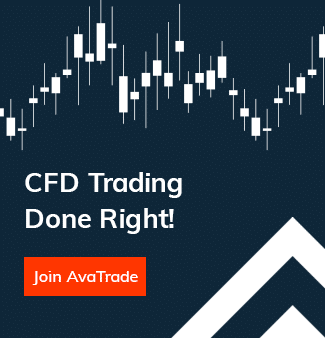CAC 40
| MT5/MT4 Symbol:CAC40 |
| Instrument:CAC 40 |
| Country:France |
| Currency:EUR |
| Exchange:Euronext |
| Trading Hours (GMT):07:00 -20:59 |
CAC 40 Stock Market Index
Introducing the CAC 40. Managed by the Euronext exchange group, the CAC is known as the benchmark index for the Paris Stock Exchange. Aptly named, the CAC-40 (CAC quarante) is a free-floating market capitalisation index, which reports the performance of 40 of the most popular traded shares listed on the Euronext Paris exchange, and the most widely used indicator of the French stock market.
CAC History
‘Compagnie des Agents de Change’ is what ‘CAC’ stood for when the group originally operated in the Paris Stock Exchange in 1801. With the introduction of the Stock Market Reform Act of January 1988, the Compagnie des Agents de Change was abolished and the ‘Société des Bourses Françaises’ was incorporated as a limited company. The CAC index, however, remained the nickname with an additional 40 listed companies that later made up the name we know today as the CAC 40, later dubbed ‘Cotation Assistée en Continu’.
In January 1988, the index experienced an all-time low of 893.82. September of 2000 saw an enormous recovery – the index hitting a record-breaking high of 6922.33.
The CAC family is made up of Frances most profitable companies, which constitute a total market capitalisation of €1.1 trillion. The most important companies that are included are L’Oreal, BNP Paribas, AXA, Danone, Orange, Sanofi, Total, L’VMH, Airbus Group and Vinci, which range in market capitalisations from €5 billion to €105 billion.
CAC 40 Index composition
‘Le Conseil Scientifique’ is the committee that carries out the selection and choice of the members who are included in the CAC 40 . Involved in the council’s decision-making process are the French market regulator AMF (Autorité des Marchés Financiers), the French Treasury Department and France’s Central Bank.
To be listed with the CAC, a company’s stocks must meet certain criteria and trading volumes that are based on the rules of the Euronext Paris Exchange (Parise Bourse). In addition, the company must have their main headquarters in France.
Market capitalisation is based on issuer shares and a minimum requirement for the free float of 15%. The CAC 40 differs in this respect from other global indices, as it seeks market-capitalisation like DAX30, whereas others such as the Nikkei 225 and Dow Jones Index are price-weighted indices. Market-capitalisation indices are reviewed by the index committee, specifically on the third Friday of September every year.
Top 5 companies represented by CAC 40 and their market capital percentage
| Sanofi | 12.19% |
| Total | 11.96% |
| BNP Paribas | 6.24% |
| LVMH | 5.02% |
| Air Liquide | 4.08% |
Factors that influence the overall index price
The main driver behind the price of an individual stock is supply and demand, economical changes and trends, global and national events. However, changes within the country would be the most influential on that country’s indices.
Investors are most likely to pay more for the stock if the earning potential is strong and profits are consistent. The industry that the company is directly involved in, distributing products or services, needs to have a healthy demand appetite. While the current company performance is important, future prospects are looked at in a more serious manner, as investments are generally done for future gains.
A broad index (like the S&P 500) price usually moves smoother than that of individual shares or sector-specific indices. Meaning, investors can benefit from diversification due to the number of companies listed under the CAC 40. Traders are able to then own a few stocks on a major index while committing only a small amount of financial capital.
Why trade indices
A stock index embodies a country’s top company shares from a particular exchange. In this case, the CAC 40 (CAC quarante) represents 40 of the largest companies traded on the Euronext Paris Stock Exchange. As France is one of the leading economies in Europe, the CAC is a strong indicator of economic performance.
There are many advantages to trading indices; they are made up of several stocks and display constant market movement in each stock. This can contribute to their share price being relatively volatile, and such occurrences can happen when there is a major economic or political event that will affect the country as a whole.
They are more liquid than equities, for instance. Traders are still exposed to market risk; however, with CAC 40 CFD trading this is at a much lower level, as they never own the actual asset, and the investment can be leveraged. Traders can place a buy on the CAC 40 and if the price goes up before they intend to sell, the traders will earn the price difference; if the price goes down, then they will sustain losses.
CAC Trading information
- CAC index trading hours are Monday to Friday 6:01 – 19:59 (GMT)
- The CAC moves in increments of 0.50
- Leveraged trading is available
- The minimum trade is 1
- The CAC index is priced in Euro
Trade CAC 40 with Friedberg Direct
Friedberg Direct is one of the best choices one can make when looking for a broker – offering you the most accessible learning tools, trading information as well as around the clock customer service staff.
- Enjoy the security of trading with a regulated Canadian forex broker
- CAC index trading
- Go long or short sell – trade your view on the market
- MetaTrader 4 & MetaTrader 5 trading platforms for desktop, tablet & mobile
- Count on 24/5 technical support
Join Friedberg Direct now and enjoy competitive spreads and leverage as well as the benefits of trading with a regulated, Canadian broker!







